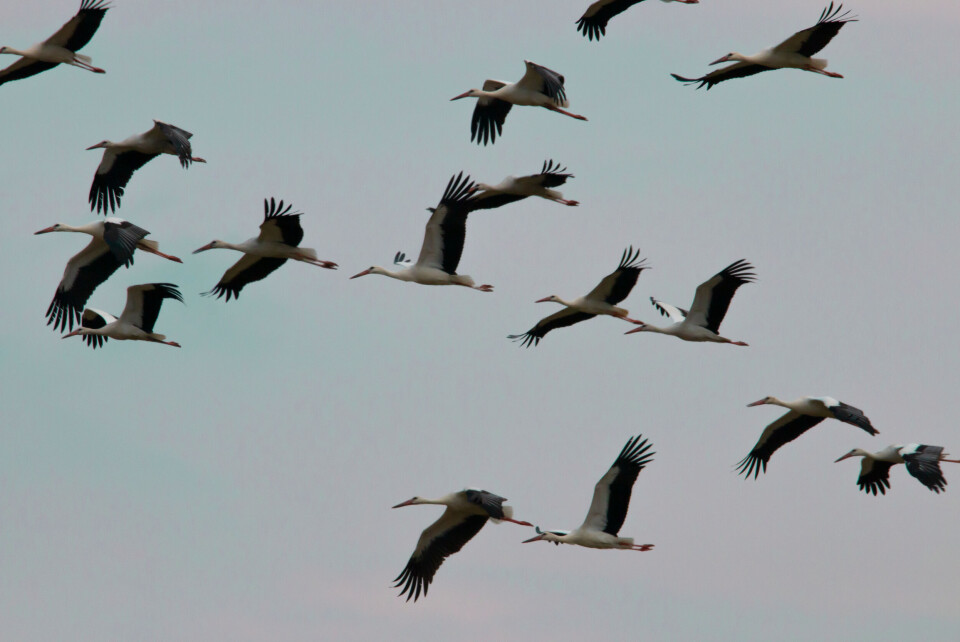-
Step back in time for some ‘dinosaur’ planting in your French garden
Captivated in the garden this month by one species of plant that dates back 200 million years, and another which is one of the oldest flowering plant families on the planet
-
Photos: tens of thousands of migrating cranes fly across France
The birds can be seen passing from the north-east to the south-west of the country
-
Discover the fascinating world of France's peregrine falcons and modern falconry
Explore the majestic bird's nesting habits and the evolution of falconry, from ancient traditions to modern-day racing and breeding practices
Spot storks flying across France as migration season peaks
The birds are gathering in especially high numbers in the Poitou-Charentes region as they stop off on their journey south for the winter

Stork migration season is peaking in France, with the flocks of majestic birds visible across the skies as they travel towards Africa.
Most storks begin migrating from the end of July to the beginning of December, and eventually spend the winter south of the Sahara. The main migration period is between mid-August and mid-September.
The storks are well-known for their presence in Alsace. They begin their migration south from the end of July onwards, to pass the winter months in warmer climates.
Their long journey usually includes several stops, making them a more common sight across France during the migration weeks.
Thierry Dubois, biodiversity officer at the Ligue de Protection des Oiseaux (LPO) Poitou-Charentes, told France 3: “When I was a child and we saw storks in August, we used to say that we would have a harsh winter.”
The birds typically use one of two main routes, either through the Bosphorus Strait or the Strait of Gibraltar. Birds from western Europe, including France, most often use the Gibraltar route, passing to the east or the west of the Pyrenees.
Stocks were previously a relatively rare sight in Poitou-Charentes, but Mr Dubois said that a release programme in the area now means they are much more common.
He said: “When I started ornithology, it was exceptional to see groups of a dozen storks, even two. However, the other day, we were able to observe a group of 180 to 200 individuals!"
Storks are even more visible in Charente-Maritime and in the western part of Deux-Sèvres, as they seek out wetlands as a break.
The birds usually feed on small frogs or fish.
Mr Dubois explained: "They have to stock up, because storks travel 200 to 300 km a day. If they land in a field or a marsh, it's to refuel before leaving when the air is warmer, because they hover.”
At night, the storks look for quiet places to perch.
However, they are not generally shy, and they have been known to choose domestic homes or even wires to rest on.
Mr Dubois said: "There have been a few dramatic cases, when they choose electricity poles. There is a big risk of electrocution. This represents 50 to 60% of the known causes of stork deaths.”
If you see a stork, the LPO advises:
-
Not to get too close
-
Leave it alone
-
Report the sighting (as well as sightings of larger groups) to the LPO to help it with its census
You can report sightings to the LPO Poitou-Charentes or to the national fauna census website here.
Related articles
Iconic winter cranes migrate over France: What to look for
























